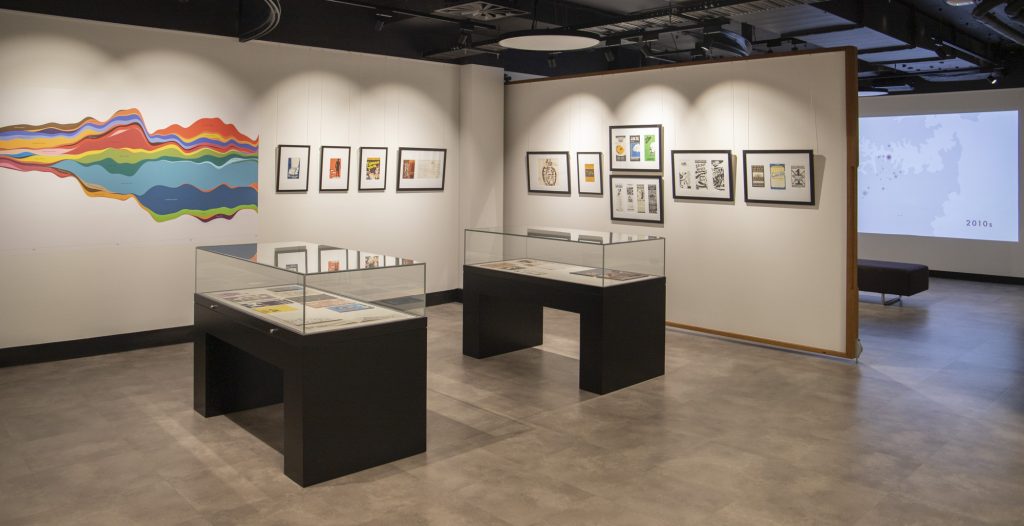Mapping the story of theatre in Sydney over one hundred years in a new exhibition at UNSW Library
Theatre is sometimes imagined as an art form at risk – from talking pictures in the 1920s and television in the 1950s to coronavirus in the 2020s. But, over the last hundred years, theatre in Sydney is a story of growth: more venues, presenting more performances, in a wider range of genres, to growing audiences.
The Performing Sydney exhibition maps the story of theatre in Sydney to reveal the contours of these changes over the last one hundred years.

The exhibition draws on the AusStage database of live performance and theatre programs from the Wolanski collection of performing arts. Maps and visualisations show where theatres in Sydney were located and when they became active. Theatre programs illustrate what was presented to audiences and how the repertoire in performance has changed over time.
The changes have been significant. From the 1920s to the 1950s, theatres in Sydney clustered in the city, operating as commercial ventures, or sustained by amateur energies, channeling the currents of international entertainment and modern drama.
Between the 1960s and the 1990s, the model of production shifted. Theatres entered into alliance with government, businesses, and universities, extracting artistic value from theatrical performance, providing working opportunities for professional artists, and cultivating an educated audience.
In the 2000s and 2010s, performance venues became festival curators, aligning genres of performance with audience segments. State governments and city councils invested in artist-led creative spaces and redeveloped cultural precincts, as relations between companies, artists and venues became transient.

About the exhibition
Performing Sydney maps the story of theatres in Sydney over the last hundred years. It combines story, data analysis and visualisation by Associate Professor Jonathan Bollen (School of Arts and Media, UNSW), drawing on on the AusStage database of live performance and theatre programs from the Wolanski collection of performing arts, managed by Paul Bentley.
In 2017 UNSW Sydney became the caretaker for the Dennis Wolanski Library collection. The collection was originally part of the Sydney Opera House performing arts library. The collection is international in scope and focuses on the performing arts in Australia, 1789–1997. It consists of 1,600 archive boxes containing press clippings, theatre programs, press releases, correspondence, and ephemera, and a card index of 80,000 entries.
Collection access is managed by the Performance Memories Project, a partnership of UNSW Library, UNSW Theatre and Performance Studies, AusStage and the Wolanski Foundation. As part of the project, we have created more than 180,000 digital records describing the collection, including a subject list of research files and two converted card indexes, one covering the performing arts in general, one devoted to Australian drama.
AusStage is the Australian database for live performance, developed by a consortium of universities, government, industry and collections, with funding from the Australian Research Council and partners. The AusStage data set on Sydney theatres includes 20,464 events at 808 venues between 1920 and 2020. The streamgraph visualises a subset of 15,163 events at 80 of Sydney’s most active theatres in the period. The data set on Sydney is extensive but not yet complete; data entry into AusStage is ongoing.
The exhibition is on display from 2 December 2020 – 14 May 2021, UNSW Main Library Level 5. Opening event: Wednesday 14 April 2021, 5.30 pm. The Main Library Exhibition Space is open to members of the public 9am – 5pm Monday to Friday. Members of the public will be required to preregister their visit to the exhibition and check in via the Service NSW app upon arrival to be given access to the Library.